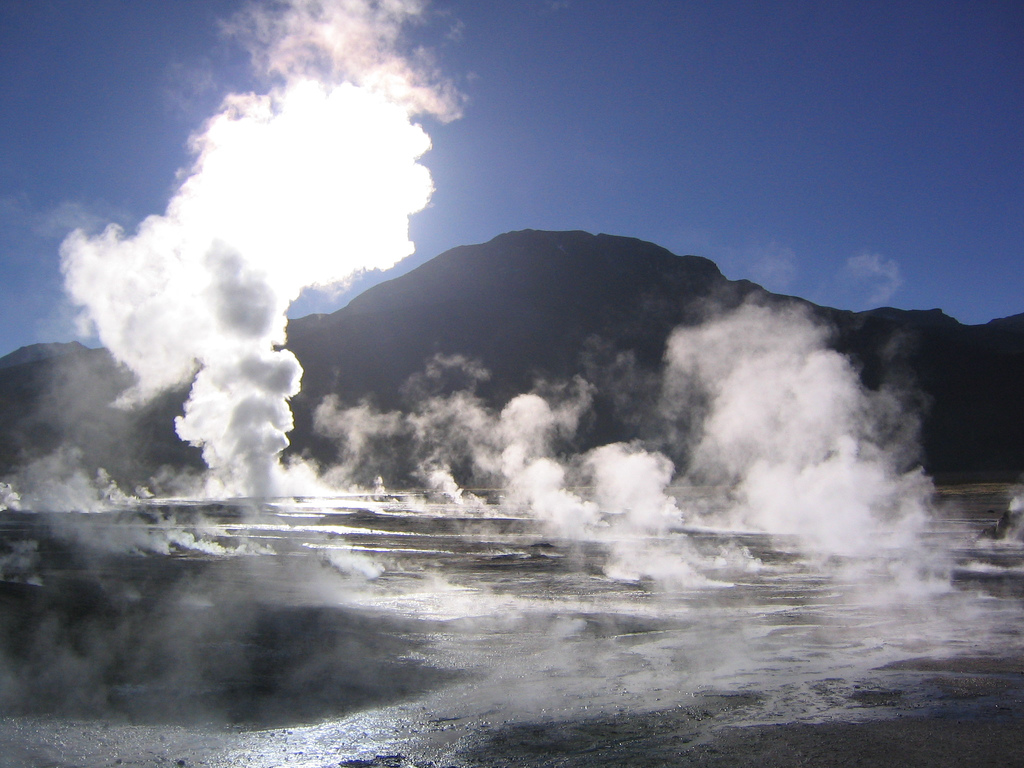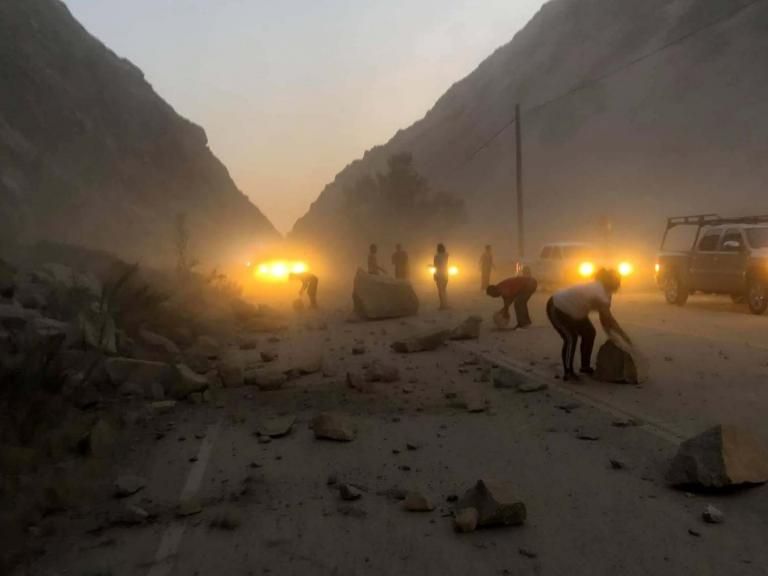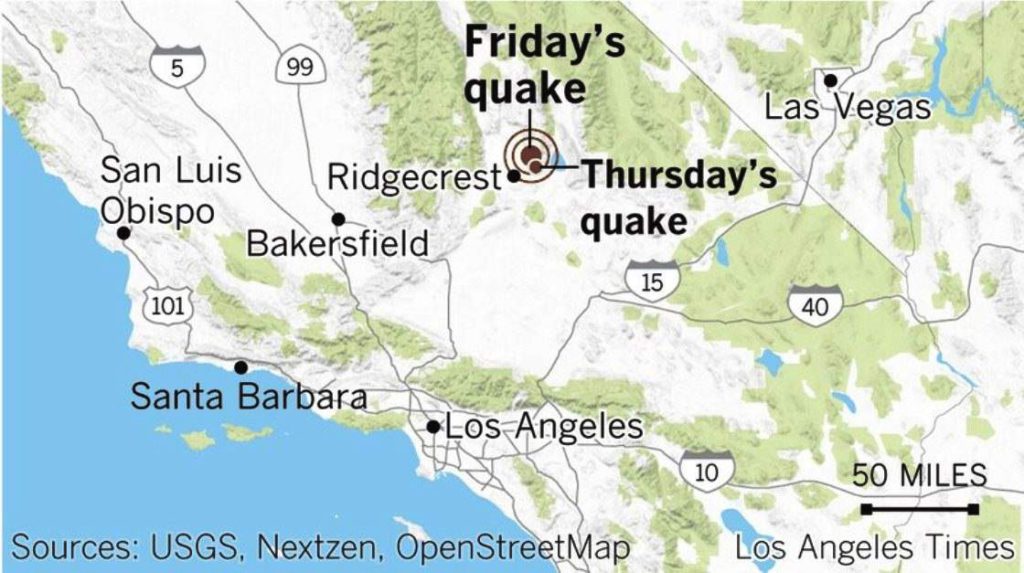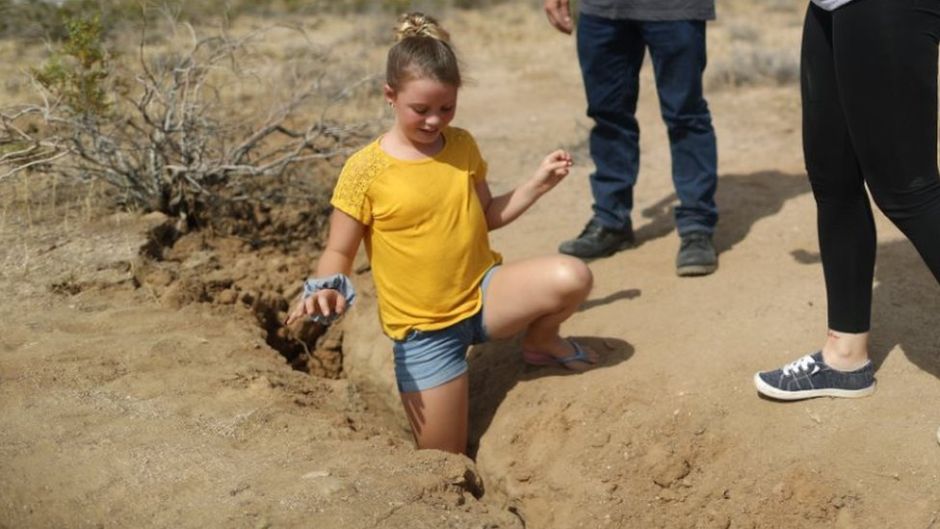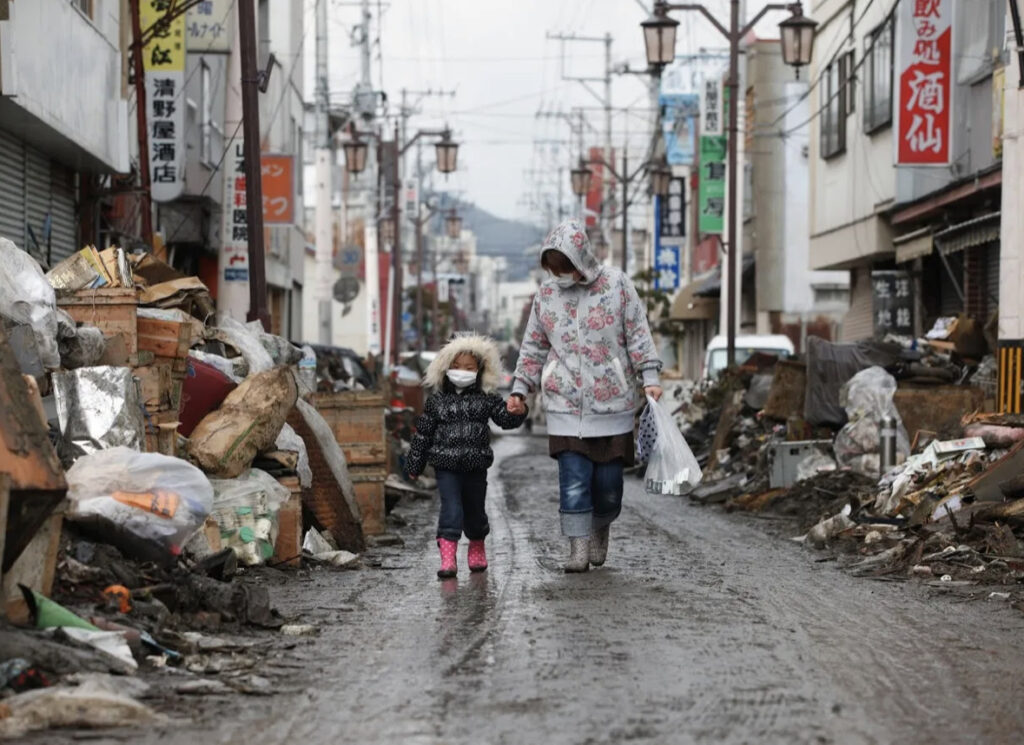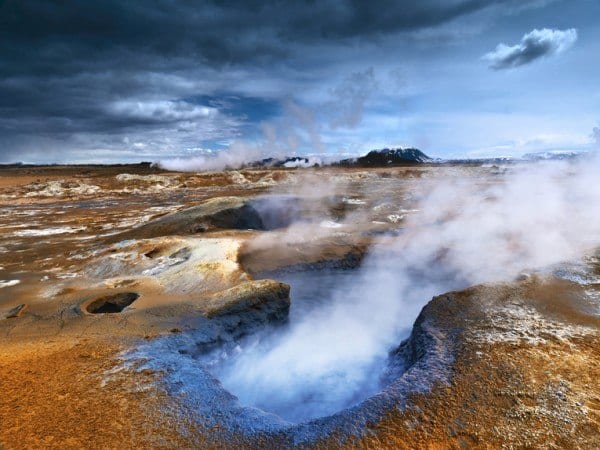MIÉRCOLES 2 DE OCTUBRE DE 2019
La Humanidad ha sido engañada completamente. Nos han alejado de las zonas rurales, las cuales están siendo maltratadas a base de extensos fuegos que carbonizan árboles, negadas de la vida animal salvaje y autóctona y usadas para las inversiones capitalistas en un mundo cada vez más desigual. Si esto no es una pesadilla no es nada. Las ciudades eligen construir más edificios en vertical, edificios de habitáculos con dimensiones reducidas, habitáculos que no permiten el alojar familias y disfrutar del confort que otorga el tener un hogar en horizontal, con tu zona verde y tu espacio amplio. Quienes poseen el capital nos ahogan y esclavizan cada vez más, al tiempo que nos venden la imagen de que vivir en la ciudad, en un pequeño loft, es la opción más cool. Cada vez más la Humanidad Planeta Tierra nos ofrece. El presente, sin embargo, nos muestra extensas llanuras de tierra sin animales y con menos verdor que antiguamente. Así pues, estamos siendo completa y absolutamente engañados. Pero, además de esclavizarnos y alejarnos de una vida sin stress, los gobiernos, organizaciones y organismos que deberían ofrecer a sus ciudadanos una vida digna están destruyendo el planeta, a la vez que, para mostrar una imagen completamente contraria y que nadie vea la verdad, nos dicen que la energía geotérmica es el futuro, al ser una energía verde. Es totalmente lo contrario.
«Lo que está destruyendo el planeta, lo que está matando y creando catástrofes climáticas y medioambientales son las perforaciones para extraer el calor del interior del planeta.»
SUEN K. GIFT
Si esto no se investiga y se detiene, el planeta, el cual ya ha iniciado su proceso de no regeneración quedará totalmente destruido en unos años. Ya sé que esto parece el argumento típico de muchas películas de ciencia ficción pero la realidad, en muchos casos, supera la ficción. Y estoy avisando de que el mayor peligro al que se está enfrentando, no sólo la Humanidad la Energía Geotérmica . Si no detenéis esto, no habrá opción en este planeta, y por supuesto, en otro planeta. Vuestro organismo molecular está moldeado para vivir en el Planeta Tierra . El extraer vuestras células del ambiente terrestre conllevaría a una temporal supervivencia. Estáis creados para defender el Planeta Tierra , no para destruirlo, como se está haciendo. Podéis creer esto o podéis ignorarlo, pero el tiempo demostrará que estáis fallando absolutamente. Existen energías renovables soportables para la vida y supervivencia humana, pero el perforar de manera agresiva el interior de La Tierra altera la isostacia de la misma y eso rompe el equilibrio electromagnético del planeta, creando un colapso geológico y climatológico a gran escala.
Como ya mostré en las anteriores entradas, Parte I y Parte II , las zonas explotadas para la energía geotérmica son las que están sufriendo mayor número de catástrofes medioambientales.
ESTADOS UNIDOS <<CalEnergy Generation’s Salton Sea Geothermal Plants include a cluster of 10 generating geothermal plants in Calipatria, near the Salton Sea in Southern California’s Imperial Valley. With a combined generating capacity of 340MW, it is the fifth largest geothermal facility in the world. CalEnergy Generation, the operator of the field, has a 50% interest in the facilities, while the remaining 50% is held by MidAmerican Geothermal. The generated power is supplied to Southern California Edison Company. Unit 1 with an output capacity of 10MW was the first to come online in 1982. It was built by a joint venture comprising of Union Oil Company and Southern California Edison. The 10th field came online in 2000. CalEnergy Generation is currently developing new projects in the area, including the Black Rock Project, which will consist of three new 50MW geothermal plants.>>
Menudo negocio tienen montado los grandes capitalistas, los cuales son los más beneficiados gracias a los recursos que la Madre Tierra nos ofrece de manera gratuita. Normal que el comunismo no sea bien visto, porque en este Planeta lo que se lleva es ser ladrón de guante blanco perteneciente a la mafia y al club exclusivo de esta Tragicomedia absurda al estilo Ruleta Rusa
Edison International / Southern California Edison
https://www.eei.org/about/members/uselectriccompanies/Documents/memberlist_print.pdf <<During the debate over the bill’s numerous subsidies, taxpayer groups questioned why thriving energy companies need federal aid to produce energy. But the bill’s defenders say it is not realistic to expect newer and cleaner technologies to succeed their own. «They need a jump-start,» said Tom Kuhn, president of the Edison Electric Institute.>>
La misma planta de energía geotérmica es la misma que recibe grandes ayudas del gobierno. De ahí el interés por este tipo de energía, que es la causante de graves daños al planeta, los cuales se están ignorando, anteponiendo las ventajas de la energía geotérmica vendiéndola como verde y rentable. Incluso obtiene ventajas fiscales:
<<Let’s start here. What is the tax credit and how does it work? The initial federal investment tax credit was part of the Energy Policy Act of 2005. This bill was passed to help solve energy problems and provide tax incentives for existing and new types of energy production, including wind and solar. At the time, the credit only lasted through 2007, but it was so successful that it was extended several times. In 2008, the program was broadened to include geothermal heating and cooling systems. In 2016, the tax credit did actually expire. However, it was reinstated in 2018 to include not just households with geothermal heat pumps installed in 2018, but it also retroactively included any geothermal heat pumps installed after January 1, 2017. The federal tax credit allows homeowners to claim 30 percent of the amount they spent on purchasing and installing a geothermal heat pump system from their federal income taxes. The way this works is by having geothermal installed at home, and filling out a form declaring the amount you spent when you file your federal income taxes. As long as your system is up and running (which only takes a few days to a few weeks) by tax season, you can claim the 30 percent from your federal income taxes. It’s an incredible advantage and can significantly reduce the cost of the system overall. There’s no limit to the value of the tax credit. As long as you still own the house where the system is installed, you can claim the true percentage based on the year you installed the system. >>
Pero no se exponen los riesgos que este tipo de energía aporta:
<<Los inconvenientes de la energía geotérmica van más allá de los típicos problemas relacionados con el impacto paisajístico o, por ejemplo, el daño ambiental (a nivel de climatología y amenaza para la fauna) que causa la energía eólica, pongamos por caso. Sus inconvenientes más dañinos son muy específicos. Además del deterioro del paisaje y de los problemas que existen para transportarla , hemos de subrayar especialmente su faceta contaminadora. Siempre dentro de un marco de bajo impacto ambiental, la contaminación que puede generar la energía geotérmica tiene distintas caras. Entre otras posibilidades, emisiones gaseosas y líquidas. Los fluidos geotérmicos pueden polucionar aguas superficiales por el vertido o acumulación de tóxicos como el arsénico, amoniaco , sodio, potasio, calcio, flúor, magnesio, silicatos, iodatos, litio, sulfuro de hidrógeno, mercurio, rubidio, antimonio, estroncio, bicarbonato, boro… ecosistema acuático requiere, en primer lugar, valorar si realmente se trata de una contaminación significativa. En caso positivo, hay que realizar unadepuración previa, pero por lo general se reinyecta en el subsuelo. La contaminación atmosférica proviene de unas vertidos gaseosos a la atmósfera que por lo general son mínimos. Aún así, cada caso debe estudiarse. Se trata de una polución formada por gases no condensables arrastrados por el vapor, entre los que encontramos dióxido de carbono y sulfuros de hidrógeno, con trazas de amoníaco, metano, radón , boro, hidrógeno, nitrógeno, arsénico y mercurio. En estos casos, la prevención también es posible, pues las emisiones pueden ser tratadas antes de su vertido. Y, aún así, conviene resaltar que la emisión de CO2 tiene un impacto mucho menor que el producido por la energía obtenida por combustión. Igualmente, si no se mantiene la presión de las reservas de agua en ocasiones se producen cambios en los niveles de agua subterránea. Ello puede suponer de pérdidas de presión y hundimiento del terreno, pero son casos extraordinarios. Es particularmente peligrosa la emisión descontrolada de ácido sulfhídrico , ya que en grandes cantidades su olor no se percibe y resulta mortífero. La contaminación térmica es otra de sus principales desventajas. El riesgo de que ésta se produzca puede neutralizarse aplicando sistemas cerrados de enfriamiento . El objetivo es no utilizar agua que luego acabe devolviéndose al entorno natural. De hacerlo, puesto que en el proceso se calienta varios grados por encima de la temperatura ambiente, esa diferencia de temperatura altera el ecosistema. Una variación que por sí sola constituye una polución que llamamos contaminación térmica. Es especialmente dañino enzonas costeras . Cuando el problema es importante afecta a la flora y fauna de forma significativa. Prevenirlo, lamentablemente, exige realizar una serie de obras muy costosas que difícilmente llegan a asumirse. Son casos en los que la geotérmica es muy cuestionable.>>
Es realmente incomprensible que no se esté investigando a fondo sobre los daños que la energía geotérmica comporta
<<Ron DiPippo, Professor Emeritus at the University of Massachusetts Dartmouth, is a world-regarded geothermal expert. This single resource covers all aspects of the utilization of geothermal energy for power generation from fundamental scientific and engineering principles. The thermodynamic basis for the design of geothermal power plants is at the heart of the book and readers are clearly guided on the process of designing and analysing the key types of geothermal energy conversion systems. Its practical emphasis is enhanced by the use of case studies from real plants that increase the reader’s understanding of geothermal energy conversion and provide a unique compilation of hard-to-obtain data and experience. An important new chapter covers Environmental Impact and Abatement Technologies, including gaseous and solid emissions; water, noise and thermal pollutions; land usage; disturbance of natural hydrothermal manifestations, habitats and vegetation; minimisation of CO2 emissions and environmental impact assessment. The book is illustrated with over 240 photographs and drawings. Nine chapters include practice problems, with solutions, which enable the book to be used as a course text. Also includes a definitive worldwide compilation of every geothermal power plant that has operated, unit by unit, plus a concise primer on the applicable thermodynamics. * Engineering principles are at the heart of the book, with complete coverage of the thermodynamic basis for the design of geothermal power systems * Practical applications are backed up by an extensive selection of case studies that show how geothermal energy conversion systems have been designed, applied and exploited in practice * World renowned geothermal expert DiPippo has including a new chapter on Environmental Impact and Abatement Technology in this new edition.>>
Parece no importar en absoluto los grandes e insólitos desastres medioambientales que están sucediendo en el planeta desde el inicio del siglo XXI:
<<Geothermal energy is constant and independent of weather conditions — unlike wind, solar and hydro. Its source is about 6,000 km underground, at the earth’s core where the slow decay of radioactive elements — a process that happens in all rocks — produces continuous temperatures hotter than the sun’s surface. The Earth’s crust is divided into 14 plates that move in different directions at different speeds. Plate boundaries are characterised by faulting, earthquakes and volcanic activity. Geothermal fields, or areas, are common on plate boundaries with volcanic activity — for example, along the Ring of Fire. In a simplified model of a traditional geothermal system, rainwater that has seeped into the ground along fractures in the rocks collects in a natural underground reservoir near a heat source at depth (such as a magma chamber). The water becomes heated, its density is lowered, and it then moves towards the surface through other fractures. Water for geothermal utilisation is extracted through drill holes that intersect these hot water flowpaths. This geothermal exploitation typically takes place at depths down to a maximum of about 3,000 metres from the earth’s surface.>>
En absoluto importan. Lo que importa es favorecer a las grandes compañías capitalistas que dicen ser verdes, relacionadas con representantes de la política. Aquí lo que importa es que el ciudadano no deje de pagar impuestos, a unos gobiernos corruptos desde la A hasta la Z, que nunca debería pagar porque son aportados de manera gratuita por el planeta, pero sí trabajar para que éste no sea degradado:
<<After Hurricane Maria hit the island of Puerto Rico in 2017, the federal government invested $3.2 billion into restoring the island’s power grid. The Edison Electric Institute deployed Carlos D. Torres, a retired vice president at Consolidated Edison, to Puerto Rico to coordinate storm rebuilding of the power grid. Subsequently, Torres was appointed by Gov. Ricardo Rossello as coordinator for storm restoration.
<<«Every industry gets their own little program,» said Myron Ebell of the free-market Competitive Enterprise Institute. «There’s pork in there for everybody.» The bill exempts oil and gas industries from some clean-water laws, streamlines permits for oil wells and power lines on public lands, and helps the hydropower industry appeal environmental restrictions. One obscure provision would repeal a Depression-era law that has prevented consolidation of public utilities, potentially transforming the nation’s electricity markets. It also includes an estimated $85 billion worth of subsidies and tax breaks for most forms of energy — including oil and gas, «clean coal,» ethanol, electricity, and solar and wind power. The nuclear industry got subsidies for research, waste reprocessing, construction, operation and even decommission. The petroleum industry got new incentives to drill in the Gulf of Mexico — as if $60-a-barrel oil wasn’t enough of an incentive. The already-subsidized ethanol industry got a federal mandate that will nearly double its output by 2012 — as well as new subsidies to develop ethanol from other sources. The final bill dropped most of the controversial amendments that blocked passage of earlier versions, including authorizing oil drilling in the Arctic National Wildlife Refuge, relieving the petroleum industry of liability for the gasoline additive known as MBTE and exempting some communities from clean-air standards. Eco-friendly measures to tighten fuel-efficiency standards for automobiles and take a stand against global warming were deleted as well. What’s left, said Rep. Edward J. Markey (D-Mass.), is «a smorgasbord.» For example, it exempts oil and gas companies from Safe Drinking Water Act requirements when they inject fluids — including some carcinogens — into the earth at high pressure, a process known as hydraulic fracturing. Betty Anthony, director for exploration and production at the American Petroleum Institute, said states already regulate the process, but residents of Alabama, Virginia, West Virginia and other states have complained that it has polluted groundwater in their communities. Meanwhile, the measure will streamline Bureau of Land Management drilling permits — even though the Bush administration already has granted a record number of permits on BLM land. Lawmakers also authorized seismic blasting in sensitive marine areas to gauge offshore oil reserves — despite a moratorium on drilling in many of those areas. And the bill will exempt petroleum well pads from storm-water regulations under the Clean Water Act. Anthony said the provision makes sense because the wells are already exempt, but critics question why the oil and gas industry, which has seen record profits in recent months, should be exempt from any aspect of environmental law. «This bill will allow America’s most profitable companies to pollute our water supplies,» said David Alberswerth of the Wilderness Society. «They’re the kings of Capitol Hill.» House Majority Leader Tom DeLay (R-Tex.) also managed to insert at least $500 million in subsidies over a 10-year period — with the option to double the amount — for research into deep-water oil and gas drilling, a grant that many lawmakers expect to go to the Texas Energy Center in DeLay’s home town of Sugar Land. The bill also includes royalty relief for deep-water drilling projects, a strategy that helped jump-start production in the Gulf during the 1990s. «If you don’t provide the relief, nothing will happen,» said John Felmy, the American Petroleum Institute’s chief economist. «The start-up costs are just too massive.» «This will be one of the biggest economic changes in the country in 70 years,» said Lynn Hargis of the liberal consumer group Public Citizen. The bill’s biggest winner was probably the nuclear industry, which received billions of dollars in subsidies and tax breaks covering almost every facet of operations. There were subsidies for research into new reactor designs, «fusion energy,» small-particle accelerators and reprocessing nuclear waste, which would reverse current U.S. policy. Rep. Ralph Hall (R-Tex.) even inserted a $250,000 provision for research into using radiation to refine oil. The bill also included $2 billion for «risk insurance» in case new nuclear plants run into construction and licensing delays. And nuclear utilities will be eligible for taxpayer-backed loan guarantees of as much as 80 percent the cost of their plants. There has not been a new U.S. nuclear plant in decades, but the industry’s supporters say that jump-starting construction will help reduce greenhouse-gas emissions. John Kane of the Nuclear Energy Institute said the federal subsidies for his industry are «simply an effort to get over that first hurdle.» The bill passed the Senate, 74 to 26. All Maryland and Virginia senators voted for the bill yesterday, except Paul S. Sarbanes (D-Md.). In the House on Thursday, the majority of area representatives approved the bill, which passed 275 to 156 . Voting against it were Reps. Roscoe G. Bartlett (R-Md.), Benjamin L. Cardin (D-Md.), Elijah E. Cummings (D-Md.), James P. Moran Jr. (D-Va.) and Chris Van Hollen (D-Md.) During the debate over the bill’s numerous subsidies, taxpayer groups questioned why thriving energy companies need federal aid to produce energy. But the bill’s defenders say it is not realistic to expect newer and cleaner technologies to succeed their own. «They need a jump-start,» said Tom Kuhn, president of the Edison Electric Institute. Sometimes, they need more than one push. In the 1990s, then-Sen. Frank H. Murkowski (R-Alaska) helped persuade Congress to spend $117 million on an «clean coal» plant in Healy, Alaska, but the factory was quickly mothballed. A potential buyer recently declared it «fatally flawed by faulty design and unproven experimental technology.» Now Murkowski’s daughter, Sen. Lisa Murkowski (R-Alaska), has helped secure an additional $80 million in loan guarantees to convert the «clean coal» plant into something that works.>>
¿Y qué ocurre cuando el ciudadano no es valorado, así como los recursos naturales del Planeta Tierra ? Ocurre que estos son los que reciben la peor parte:
<<The Geysers is a geothermal field located in California’s Mayacamas Mountains, approximately 115km north of San Francisco. It is the world’s biggest single geothermal field, comprising of 22 geothermal power plants with an installed capacity of 1,517MW. The Geysers is also the area where the US’s first geothermal power plant was put into commercial operation.>>
Si observáis existe una relación de cercanía entre y los terremotos ocurridos a principios del año 2019 en la zona de Ridgecrest y Geothermal field located in California’s Mayacamas Mountains
<<The Geysers is a geothermal field located in California’s Mayacamas Mountains, approximately 115km north of San Francisco. It is one of the world’s biggest single geothermal field, comprising of 22 geothermal power plants with an installed capacity of 1,517MW. It is also the area where the US’s first geothermal power plant was put into commercial operation.>>
http://www.geologyin.com/2019/07/another-stronger-quake-in-ridgecrest.html <<The Geysers geothermal resource field is spread over 117 square kilometres in the counties of Sonoma, Lake and Mendocino.
¿Qué conlleva el explotar el calor interno de La Tierra ? Conlleva que los capitalistas y los inversores se enriquezcan todavía más, a costa de la salud y bienestar de los ciudadanos, desconociendo por completo las consecuencias que conlleva el perforar La Tierra para usar la energía geotérmica de su interior…
<<Western GeoPower (WGP) has signed an amended power purchase agreement (PPA) with Northern California Power Agency to sell all energy and available environmental attributes from WGP’s proposed geothermal power plant at in Northern California, US.
<<The Stone Age did not end because people ran out of stones, it ended because they found something better. (Sheikh Yamani) Ein neuer ENERGIE-TREND Am Donnerstag 9.3.2006 war schon einiges zu spueren von einem kommenden Geothermie Trend, zumindest die Bereitschaft vieler in diesem Bereich zu investieren Es gab Kursbewegungen von -8 bis + 40 % bei verschieden Werten Aus diesem Grund moechte ich einen Neuen Thread eroeffnen, der sich mit dem Gesamtspektrum aller Geothermie Aktien befasst Die Vorzuege der Geothermie lassen sich mittlerweile auf zahlreichen Websites nachlesen , kurz & gut gesagt: GRUNDLASTFAEHIG & Ueberall auf dem Planeten Erde realisierbar & SAUBER & Guenstig Ich sammle schon seit einiger Zeit Infos zu diesem Sektor, will jetzt aber auch niemanden hier am Anfang erschlagen mit zahllosen Tabellen und Artikeln…>>
¿Qué relación existe entre lo anterior y la nueva inversión en Bolivia , en la que se va a destruir una zona que había sido escogida como Maravilla del Mundo y que, sorprendentemente, fue descartada? Quizás fuera porque no se deseaba proteger a la misma, sino explotarla. ¿Por quién? Por los mismos que tienen relación con el enlace anterior:
<<Hier erst mal eine Uebersicht ueber die Werte, die ich bisher finden konnte: ORMAT TECHNOLOGIES INC. Wkn : A0DK9X www.ormat.com ENRO AG Wkn : 549282 www.enroag.de Geodynamics LTD Wkn: 754506 www.geodynamics.com Essential Innovations Technology Wkn: A0F6LB www.eitechcorp.com Western Geopower Wkn: 254049 www.geopower.ca Der Ehre halber sei hier noch Green-Energy erwaehnt(viel Werbung bei Onvista) Beteiligungsfond green-energy.de Weiterhin haben fast alle Versorger-Monopolisten mehrere Alibi-Projekte am laufen, wobei sich die EnBw da positiv abhebt. Natuerlich muss man auch eine Siemens dazu zaehlen, die z.B mit ihrer Industrial Solutions and Services (I&S) – Gruppe gerade in Unterhaching ein Projekt angekuendigt hat.>>
Ormat es la misma empresa que, junto con la española Sacyr , demandada por daños graves en Mozambique , van a crear una planta geotérmica en la Laguna Colorada, en Bolivia .
Así pues, ¿dónde están los organismos responsables de cuidar del planeta? ¿Dónde están ahora las Naciones Unidas , las organizaciones, fundaciones y famosos que se están lucrando con el nuevo y fraudulento movimiento #ClimateStrike #FridaysForFuture #ActOnClimate ? ¿Dónde estaba Greenpeace cuando la Amazonia quemaba durante años? ¿Dónde están ellos ahora para evitar esto? Dicen que existe un Cambio Climático . No. Existe un asesinato silenciado por los mismos que ven en el Planeta su mayor inversión, porque están invirtiendo, más que nunca, en energía geotérmica …
ITALIA
<<Larderello Geothermal Complex, comprising of 34 plants with a total net capacity of 769MW, is the second biggest geothermal power plant in the world. The power produced from the geothermal field, located in Tuscany, Central Italy, accounts for ten percent of all geothermal energy produced worldwide and caters for 26.5% of regional power needs.>>
Esta planta de energía geotérmica se halla cerca de la zona en la que están ocurriendo deslizamientos y movimientos tectónicos así como la activación de volcanes que se hallan en el perímetro norte y sur del mismo, teniendo como situación grave el terremoto ocurrido en el año 2016, terremoto cercano a la zona del yacimiento geotérmico.
<<Larderello is a frazione of the comune of Pomarance, in Tuscany in central Italy, renowned for its geothermal productivity.>>
MEXICO
<<At 720MW, Cerro Prieto Geothermal Power Station in south Mexicali, Baja California in north Mexico, is the second third geothermal plant in the world. The power plant, like all other geothermal fields in Mexico, is owned and operated by the Comisión Federal de Electricidad (CFE). The power station features four plants, comprising of 13 units. The first plant was commissioned in 1973, while the fourth plant was commissioned in 2000. The turbines at the complex include four 110MW condensing type, four 110MW double-flash type, four single-flash of 37.5MW each, four single-flash of 25MW each and one 30MW single-flash. They were supplied by Toshiba and Mitsubishi Heavy Industries. A fifth plant, which will comprise of two 50MW turbines, is currently under construction.>>
En la zona de Baja California, Mexico , no ocurrían movimientos geológicos considerables desde el siglo XIX, siendo el suceso en La Paz del año 1995, el primero desde entonces:
<<La mañana del viernes 30 de junio de 1995, los residentes de la capital del estado fueron levantados por un fuerte estruendo que venía por debajo de la tierra y atravesó la ciudad de lado a lado. Se trató de un fuerte temblor de 6.2 grados que tuvo su epicentro cerca de la isla Espíritu Santo. Aunque hubo varias réplicas, éste sismo si resultó ser toda una novedad. No hubo daños materiales ni víctimas qué lamentar, pero sí mucho temor en la ciudadanía. Y éste fue una zona sísmica donde, de acuerdo al reporte científico que citamos, no existía mucha información.>>
<<Se trató de un sismo de 6.2 grados –el más intenso registrado hasta ahora- cuyo epicentro tuvo lugar muy cerca de la capital cerca de la isla Espíritu Santo;Aunque ha sido el temblor más fuerte registrado en el estado, no ha sido el único ni el más peligroso de estos fenómenos; a finales de noviembre del año 2006 en la comunidad pesquera de Bahía Asunción en la zona pacífico norte del municipio de Mulegé, cientos de personas abandonaron sus viviendas y se trasladaron a pueblos vecinos debido a decenas de temblores de baja intensidad; otros salieron del pueblo para acampar en la pista aérea conocida como La Aviación. Investigadores del Centro de Investigación Científica y de Educación Superior de Ensenada(CISESE) se trasladaron al lugar para estudiar el fenómeno y descartaron la posibilidad de un efecto de una erupción volcánica proveniente de alguna ramificación del volcán de Las Vírgenes ubicado a unos 150 kilómetros al sur y determinaron que era un fenómeno sísmico de los conocidos como “enjambre” que no representaba riesgo para la población. Luego de 4 días de angustia los pobladores retornaron a sus viviendas.>>
En la mayoría de situaciones, los científicos alegan que no existe peligro ante sucesos como los anteriores. Sin embargo, en una zona tan rica en yacimientos geotérmicos y petrolíferos como son los Estados Unidos y Mexico , no estudiar bien a fondo qué provoca el que los terremotos se hayan activado tanto en los últimos años sólo es una manera de no querer dejar de continuar extrayendo combustibles y componentes energéticos del interior de La Tierra , algo que está destruyendo, cada vez más, el Planeta:
<<Terremotos en California: la impresionante grieta que apareció en el desierto tras los sismos de hace unos días.>>
FILIPINAS
<<In December 2008 President Gloria Macapagal-Arroyo signed into law a major Renewable Energy Bill, designed to promote development of new and existing renewable energy resources, including geothermal. The Philippines geothermal community, including Chevron, has enthusiastically supported the RE bill and looks forward to new growth in geothermal capacity and production as the bill is implemented. As of this writing, the Implementing Rules and Regulations for the bill have just been approved, with the support of the geothermal community. The introduction of the Wholesale Electricity Spot Market in 2006 has forced frequent load curtailments, leading to some operational challenges because Mak-Ban’s facilities were designed to operate as baseload.>>
Estudiando el caso de la planta geotérmica sita en la región de Filipinas , la cual está activa desde hace 30 años, relacionándolo con los casos anteriores he hallado cierta relación que tiene como máximo común divisor cierta ley que se introdujo en los Estados Unidos en el año 2005 y la cual ha favorecido al liberalismo capitalista:
<<The Energy Policy Act of 2005 (Pub.L. 109–58) is a bill passed by the United States Congress on July 29, 2005, and signed into law by President George W. Bush on August 8, 2005, at Sandia National Laboratories in Albuquerque, New Mexico. The act, described by proponents as an attempt to combat growing energy problems, changed US energy policy by providing tax incentives and loan guarantees for energy production of various types. The Act created the Energy Efficient Commercial Buildings Tax Deduction, a special financial incentive designed to reduce the initial cost of investing in energy-efficient building systems via an accelerated tax deduction under section §179D of the Internal Revenue Code (IRC)[4] Many building owners are unaware that the [Policy Act of 2005] includes a tax deduction (§179D) for investments in «energy efficient commercial building property» designed to significantly reduce the heating, cooling, water heating and interior lighting cost of new or existing commercial buildings placed into service between January 1, 2006 and December 31, 2013. §179D includes full and partial tax deductions for investments in energy efficient commercial building that are designed to increase the efficiency of energy-consuming functions. Up to $.60 for lighting, $.60 for HVAC and $.60 for building envelope, creating a potential deduction of $1.80 per sq/ft. Interior lighting may also be improved using the Interim Lighting Rule, which provides a simplified process to earn the Deduction, capped at $0.30-$0.60/square foot. Improvements are compared to a baseline of ASHRAE 2001 standards. To obtain these benefits the facilities/energy division of a business, its tax department, and a firm specializing in EPAct 179D deductions needed to cooperate. IRS mandated software had to be used and an independent 3rd party had to certify the qualification. For municipal buildings, benefits were passed through to the primary designers/architects in an attempt to encourage innovative municipal design. The Commercial Buildings Tax Deduction expiration date had been extended twice, last by the Energy Improvement and Extension Act of 2008. With this extension, the CBTD could be claimed for qualifying projects completed before January 1, 2014.>>
¿Qué ocurrió a partir de esta ley aprobada en el año 2005? Ocurrió que quienes poseían capital para invertir en energías verdes, entre otras, vieron la oportunidad de obtener una gran suma de dinero a través de esta nueva ley, la cual favorecía a la energía geotérmica :
<<It includes provisions aimed at making geothermal energy more competitive with fossil fuels in generating electricity.>>
Pero no sólo la energía geotérmica se vio beneficiada, como he indicado en la anterior cita (1), en el apartado CALIFORNIA :
<<ENRO AG : Die erste deutsche Geothermie AG wurde relativ unbemerkt Ende 2005 von Valora Effekten released. Das Essener Unternehmen wurde schon 1985 von Dr. Karheinz Bund gegruendet. Kein Unbekannter im Energie-Sektor, so war der heutige Vorsitzende des Aufsichtsrats frueher Vorstand der damaligen Ruhrkohle AG. ENRO hat sich bisher einen Namen gemacht als Entwickler und Planer von Kraftwerken auf Basis erneuerbarer Energien( Blockheizkraftwerke, Biomassekraftwerke …).Die selbst gesteckten Unternehmensziele sind: Oekologische Effizienz, technische Innovation und Rentabilitaet. Dazu besitzt das Unternehmen zahlreiche Beteiligungen an lokalen Versorgern und ist auch in einigen Joint Ventures im EE-bereich involviert. In Brandenburg will ENRO nun Deutschlands groesstes Geothermie-Kraftwerk errichten mit einer Gesamtleistung von 25 MW. Die Planungs- und Genehmigungsphase ist bereits abgeschlossen. Als wissenschaftlicher Backbone sitz das Geothermie-Zentrum der Uni Bochum mit im Boot. Zuletzt sorgte eine recht spontan angekuendigte Kapitalerhoehung(war schon seit laengerem genehmigt) fuer Unsicherheit an der Boerse. Der Investor Relations Bereich laesst noch etwas zu wuenschen uebrig.>>
Sino que las centrales nucleares obtuvieron una gran financiación:
<<The bill’s most far-reaching provision may be the repeal of the Public Utility Holding Company Act of 1935, which has blocked the owners of utilities from owning other companies and has prevented mergers in the electricity industry. Utility officials and other proponents of repeal say it will attract capital, helping utilities build transmission lines and generating plants that will prevent blackouts.
<<The committee is the body that recommends the government’s carbon targets, and offers advice on how they might best be met. Of all the agencies involved in these questions, it has the most influence over government policy, as we saw during the bust-up within the cabinet this month over whether or not its target should be adopted (the committee won after David Cameron intervened). What the committee recommends is what is most likely to happen. It advises that:
Parece que lo ocurrido con algunas centrales nucleares y los graves riesgos que éstas conllevan no han importado y se sigue apostando en este tipo de energía…
<<The accident was started by the Tōhoku earthquake and tsunami on 11 March 2011. On detecting the earthquake, the active reactors automatically shut down their fission reactions. Because of the reactor trips and other grid problems, the electricity supply failed, and the reactors’ emergency diesel generators automatically started. Critically, they were powering the pumps that circulated coolant through the reactors’ cores to remove decay heat, which continues after fission has ceased. The earthquake generated a 14-meter-high tsunami that swept over the plant’s seawall and flooded the plant’s lower grounds around the Units 1–4 reactor buildings with sea water, filling the basements and knocking out the emergency generators. The resultant loss-of-coolant accidents led to three nuclear meltdowns, three hydrogen explosions, and the release of radioactive contamination in Units 1, 2 and 3 between 12 and 15 March. The spent fuel pool of previously shutdown Reactor 4 increased in temperature on 15 March due to decay heat from newly-added spent fuel rods; but did not boil down sufficiently to expose the fuel.>>
<<The Tohoku tsunami produced waves up to 40 meters, more than 450,000 people became homeless as a result of the tsunami and more than 15,500 people died.>>
